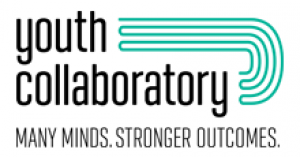The Powerful Ingredients of the Lived Experience of Young People in Supporting RHY

Body
The Value of Authentic Youth Voice
As a collaborative group of youth and young adults, the Youth Catalyst Team is excited to partner with the National Clearinghouse on Homeless Youth & Families (NCHYF) and the Family and Youth Services Bureau (FYSB) to share our insights on RHY services in a regular posting. We are a group of leaders, ages 16 to 24, who use our knowledge, skills, and personal understanding of systems and services to advance the youth services field.
We want to first thank NCHYF and FYSB for this opportunity! We will use this forum to share solutions, ideas, and youth perspectives with RHY grantees, communities, organizations, and young people around the country.
Now we want to discuss the topic at hand: Why, and more importantly, how to include youth voice in the first place?
It can be extremely difficult to have open and trusting communication between providers and youth when it comes to things like goal setting, skill-building, program matching, and other key skills that help youth to be successful. This may stem from providers wanting to do what they believe is best for young people, but because service providers may have a concept of what the youth needs, they tend to move ahead with that belief, without genuinely involving youth in that crucial process. The intention is to help; but it creates a culture of mistrust and can lead youth to be guarded. This lends itself to gaps in our work and places additional burden onto youth and young adults who already face a spectrum of adversity, or adversities. Adult providers may also become less inclined to engage youth in decision making because of these misunderstandings. The intentions are positive, but the methods can lack efficiency.
Without effective, mutually open communication in how we approach the very important work that we care so deeply for, we may never see an end to youth homelessness. But with time, energy, patience, and genuine care, we can bridge these gaps and connect the youth of today with the success of tomorrow.
We learn time and time again that excluding those who we are serving in our planning does not prove to be wise. We have examples and methods we can use to learn from one another and to get stronger and better together. We can also advance and adapt to the climate, but we need to incorporate a new ingredient, not just on the surface, but blended into everything we do.
Just what is that secret ingredient that we need? There is a saying, “nothing about us without us,” that originated in the disability rights movement. That ingredient is so crucial to youth services as well. It must become inconceivable to make decisions about young people without their involvement. Young people need to be heard, and providers need to be prepared to act on what they learn. The belief in the critical value and importance of lived experience must be included in our recipe for youth’s success. Programs must give the youth and young adults we serve a real seat at our decision-making tables in order to hear and act on what youth want and need! The best way to assist people with an obstacle (such as youth homelessness) is to meet that obstacle with an unstoppable force—in this case, youth voice.
Over the following months, we will bring you important ingredients and focus more attention on the priorities of young people. We implore all people who work with youth and young adults to take time to dream with us, to innovate and implement solutions with us, to move forward with us - because if we’re not in-sync, our future and success will never link!
Who are we? We are the voice of a generation, a wave of passionate, diverse leaders from across the country. We serve to amplify the voices of young people through national awareness, advocacy, local and national partnerships, and providing training and coaching for organizations, systems, and young leaders in local communities. We hope you find insights in our posts that you can take back to your community and incorporate into the work you do each and every day.
In future posts we hope to:
- contribute to national awareness campaigns,
- consider the intersectionality among RHY and other vulnerable populations
- offer guidance on how to incorporate youth voice across different levels of a youth-serving organization,
- produce a podcast with interviews of YCT members, and
- explore the best ways to use analytics for youth work.
We hope you’ll become a regular reader of our column!
All the very best,
The Youth Catalyst Team
This post was written by Liam Spady with input from Youth Catalyst Team members.